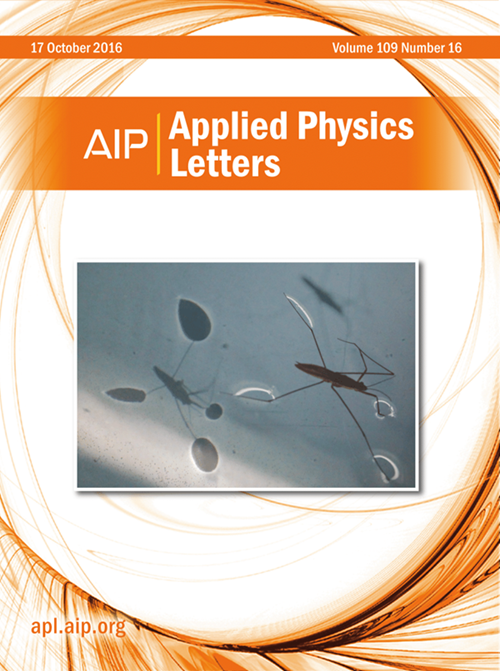深紫外等离子体中铟纳米粒子阵列的形成和光学性质
IF 3.6
2区 物理与天体物理
Q2 PHYSICS, APPLIED
引用次数: 0
摘要
我们利用计算-实验相结合的方法来研究铟纳米粒子(NP)阵列分布对深紫外(UV)等离子体共振的影响。对于光子能量&;lt;5.7 eV时,椭偏光谱分析表明,铟NP阵列在硅上引起硅的反射率增加。在5.7 ~ 7.0 eV的不同能量范围内,NP阵列引起了反射率的降低。利用从原子力显微照片中提取的NP大小分布作为输入,从时域有限差分(FDTD)模拟中预测了反射率的类似趋势。此外,在7.4-9.2 eV的能量范围内,时域有限差分模拟显示了反射最小值,这是局部表面等离子体共振的特征。从单个铟NP中收集的电子能量损失谱显示,在≈8 eV时存在LSPR,进一步支持了硅上铟NP阵列用于深紫外等离子体的前景。本文章由计算机程序翻译,如有差异,请以英文原文为准。
Formation and optical properties of indium nanoparticle arrays for deep-UV plasmonics
We utilize a combined computational-experimental approach to examine the influence of indium nanoparticle (NP) array distributions on deep-ultraviolet (UV) plasmon resonances. For photon energies < 5.7 eV, analysis of ellipsometric spectra reveals an increase in silicon reflectance induced by indium NP arrays on silicon. For various energies in the range 5.7–7.0 eV, a decrease in reflectance is induced by the NP arrays. Similar trends in reflectance are predicted from finite-difference time-domain (FDTD) simulations using NP size distributions extracted from atomic-force micrographs as input. In addition, in the energy range of 7.4–9.2 eV, the FDTD simulations reveal reflectance minima, characteristic of localized surface plasmon resonances. Electron energy-loss spectroscopy collected from individual indium NPs reveals the presence of LSPR at ≈ 8 eV, further supporting the promise of indium NP arrays on silicon for deep-UV plasmonics.
求助全文
通过发布文献求助,成功后即可免费获取论文全文。
去求助
来源期刊

Applied Physics Letters
物理-物理:应用
CiteScore
6.40
自引率
10.00%
发文量
1821
审稿时长
1.6 months
期刊介绍:
Applied Physics Letters (APL) features concise, up-to-date reports on significant new findings in applied physics. Emphasizing rapid dissemination of key data and new physical insights, APL offers prompt publication of new experimental and theoretical papers reporting applications of physics phenomena to all branches of science, engineering, and modern technology.
In addition to regular articles, the journal also publishes invited Fast Track, Perspectives, and in-depth Editorials which report on cutting-edge areas in applied physics.
APL Perspectives are forward-looking invited letters which highlight recent developments or discoveries. Emphasis is placed on very recent developments, potentially disruptive technologies, open questions and possible solutions. They also include a mini-roadmap detailing where the community should direct efforts in order for the phenomena to be viable for application and the challenges associated with meeting that performance threshold. Perspectives are characterized by personal viewpoints and opinions of recognized experts in the field.
Fast Track articles are invited original research articles that report results that are particularly novel and important or provide a significant advancement in an emerging field. Because of the urgency and scientific importance of the work, the peer review process is accelerated. If, during the review process, it becomes apparent that the paper does not meet the Fast Track criterion, it is returned to a normal track.
 求助内容:
求助内容: 应助结果提醒方式:
应助结果提醒方式:


